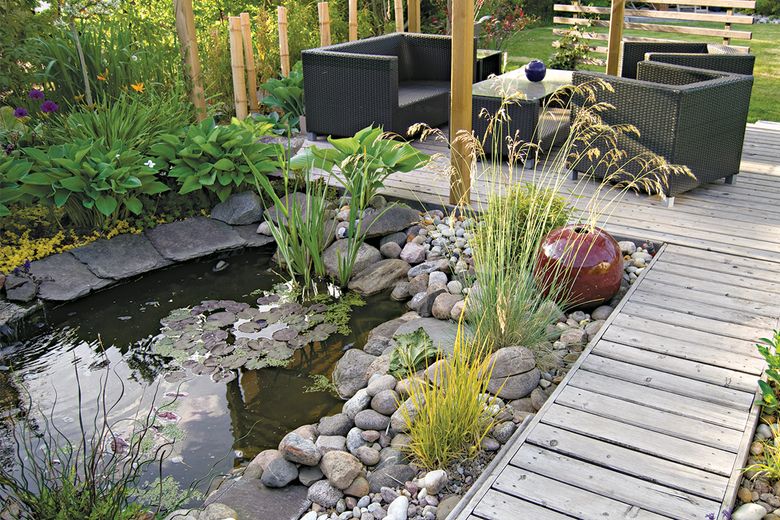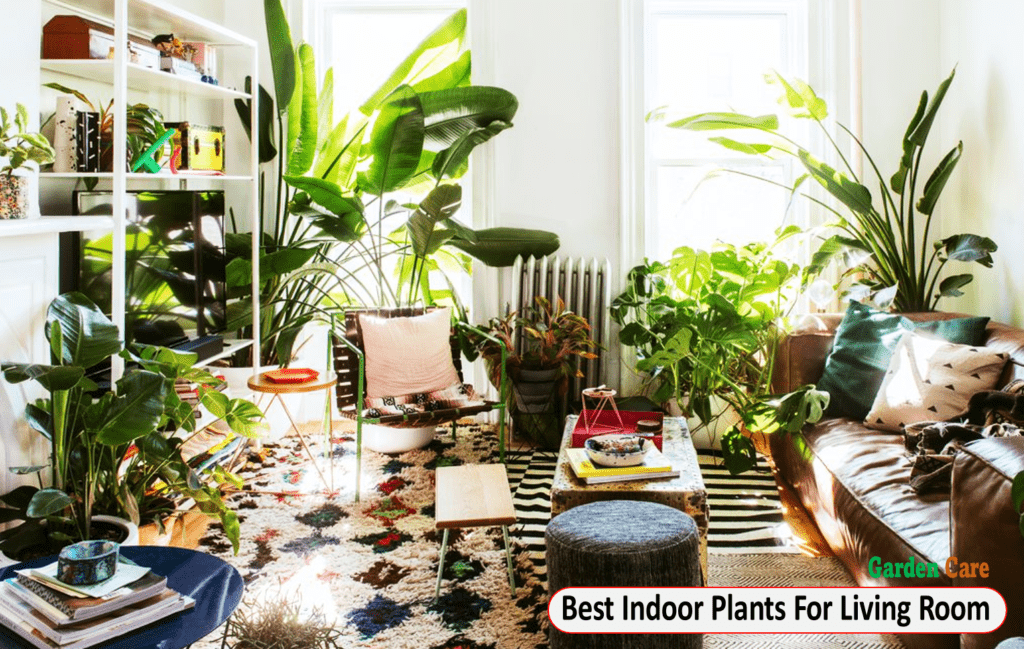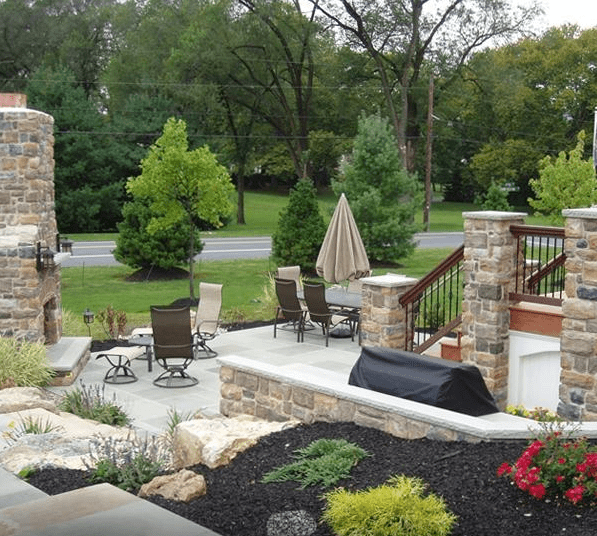Garden Pond Ideas With Waterfall can transform your outdoor space into a serene and visually appealing oasis. A pond with a cascading waterfall adds movement, sound, and a touch of nature’s beauty to your garden.
The sight and sound of water falling into the pond create a calming atmosphere, making it an ideal spot for relaxation and meditation. Additionally, the waterfall can also act as a natural filter, helping to keep the water in the pond clean and oxygenated.
With a variety of design options available, you can customize your garden pond and waterfall to suit your preferences and create a unique and enchanting feature in your backyard.
[ez-toc]
1. Choosing The Right Location
Choose the perfect location for your garden pond with a beautiful waterfall. Create a tranquil oasis in your backyard with these innovative garden pond ideas.
Finding the perfect location for your garden pond with a waterfall can make all the difference in creating a stunning outdoor space that you can enjoy for years to come. Assessing your outdoor space, considering sunlight and shade, and ensuring accessibility and visibility are key factors to keep in mind when selecting the ideal spot for your water feature.
1.1. Assessing Your Outdoor Space
Start by assessing your outdoor space to determine the best location for your garden pond with a waterfall. Consider the size and shape of your yard, as well as any existing landscaping features or structures that may impact the placement of your water feature. Look for an area that allows you to maximize the impact of the pond and waterfall while also blending seamlessly with the rest of your garden.
1.2. Considering Sunlight And Shade
Next, take into account the amount of sunlight and shade the potential location receives throughout the day. Most aquatic plants and species thrive in sunlight, so choose a spot with ample sunlight exposure to ensure the health and growth of your pond and its inhabitants. However, be cautious of too much direct sunlight, as it can cause excessive heat and evaporation. Balance is key, so aim for a location that offers a mix of sunlight and shade throughout the day.
1.3. Accessibility And Visibility
Accessibility and visibility are important factors to consider when choosing the right location for your garden pond with a waterfall. Ensure that the site you select is easily accessible for maintenance and enjoyment. You’ll want to be able to reach your water feature easily for cleaning, feeding fish, and adding any necessary treatments or accessories. Additionally, consider the visibility of your pond from various angles, including both indoors and outdoors, to ensure you can fully appreciate its beauty from all vantage points.
In summary, choosing the right location for your garden pond with a waterfall involves assessing your outdoor space, considering sunlight and shade, and ensuring accessibility and visibility. With careful consideration of these factors, you can create a stunning water feature that becomes the centerpiece of your garden oasis.
2. Designing The Pond
Designing a garden pond with a waterfall is an exciting project that can transform your outdoor space into a tranquil oasis. In this section, we will explore the key considerations for designing your pond, including determining the size and shape, selecting the right materials, and incorporating the waterfall into the design.
2.1. Determining The Size And Shape
When designing your garden pond, it’s important to determine the appropriate size and shape that will complement your overall landscape. Consider the available space in your garden and think about how the pond will fit in harmoniously with the surrounding elements.
A rectangular pond, for instance, can create a modern and formal look, while a circular or irregular shape pond can provide a more natural and relaxed feel. It’s vital to find a balance between the size of the pond and the available space, ensuring it doesn’t overpower or get overshadowed by other elements in your garden.
2.2. Selecting The Right Materials
The choice of materials for your pond is crucial as it affects both the aesthetic appeal and functionality of the feature. To ensure the longevity of your pond, opt for high-quality materials that are resistant to weathering and can withstand the elements.
Some popular options for pond construction include preformed fiberglass or plastic liners, concrete, or rubber membranes. Each material has its pros and cons, so consider factors such as durability, ease of installation, and maintenance requirements before making your decision.
Additionally, think about incorporating natural elements, such as rocks and pebbles, to create a more organic and visually appealing pond. These materials can contribute to the overall aesthetics and help blend the pond seamlessly into the surrounding landscape.
2.3. Incorporating Waterfall Into The Design
A garden pond with a waterfall adds a delightful element of movement and sound to your outdoor space. When incorporating a waterfall into your pond design, you have various options to explore.
The positioning of the waterfall is essential for achieving optimal visual and auditory effects. Placing it at an elevated point in the pond, such as a natural slope or a strategically positioned rock, can create a more dynamic and natural-looking waterfall.
Consider the flow rate and volume of water for your waterfall, as it will determine the sound it produces and the visual impact it creates. You can enhance the sound by adding speed bumps or twists in the water flow, creating a soothing and calming ambiance in your garden.
3. Creating A Natural Ecosystem
Creating a natural ecosystem in your garden pond is an incredible way to enhance its beauty while also promoting the overall health of your aquatic environment. By taking certain steps, such as installing a filtration system, adding aquatic plants, and introducing fish and other wildlife, you can transform your pond into a thriving and harmonious ecosystem.
3.1. Installing Filtration System
Installing a filtration system is crucial for maintaining the water quality in your garden pond. This system helps to filter out impurities and debris, resulting in crystal clear water that is beneficial for the overall health of the plants and wildlife living in the pond. By using a combination of mechanical, biological, and chemical filtration, you can ensure that the water remains clean and balanced.
3.2. Adding Aquatic Plants
Adding a variety of aquatic plants to your garden pond not only helps to create a visually appealing landscape but also plays a vital role in maintaining the ecosystem’s balance. Plants such as water lilies, lotus, and cattails not only provide shade and shelter for fish and other aquatic organisms but also act as natural filters, absorbing excess nutrients that can cause algae blooms. These plants also oxygenate the water, improving the overall health of the ecosystem.
3.3. Introducing Fish And Other Wildlife
Introducing fish and other wildlife into your garden pond brings a lively and dynamic element to the ecosystem. Fish, such as koi or goldfish, not only add a splash of color but also contribute to the natural balance by consuming mosquito larvae and certain types of algae. Other wildlife, such as frogs, dragonflies, or even turtles, can also be introduced to further enhance the diversity and richness of the ecosystem. It’s important to choose species that are well-suited to your pond’s environment to ensure their survival and compatibility with other residents.

Credit: evergreenlandscapes.ca
4. Enhancing With Landscaping
Garden ponds with a waterfall are a stunning feature in any outdoor space. One of the best ways to enhance your garden pond is through creative landscaping. The right plants, rocks, and pathways can transform a simple pond into a picturesque oasis that enhances the tranquility and natural beauty of your backyard.
4.1. Choosing Complementary Plants
When selecting plants to complement your garden pond, choose those that thrive in moist soil and partial shade. Ferns, hostas, and water lilies are excellent choices for creating a lush and natural appearance around the water’s edge. These plants not only add visual interest but also provide shade and shelter for fish and other aquatic life inhabiting the pond.
4.2. Adding Rocks And Boulders
Strategically placing rocks and boulders around the pond can add texture and dimension to the landscape. Large boulders can create a natural barrier between land and water, simulating the look of a natural stream or waterfall. Smaller rocks can be arranged to create a cascading effect, guiding the flow of water and enhancing the soothing sound of a tranquil stream.
4.3. Creating A Pathway Or Patio Area
Integrating a pathway or patio area near the garden pond provides a functional and aesthetic element to the overall landscaping. Whether constructed from natural flagstone, pavers, or gravel, a path or patio allows easy access for maintenance and leisurely enjoyment of the pond environment. It also becomes a perfect spot for cozy seating arrangements or outdoor gatherings.
5. Maintenance And Care
When it comes to maintaining a garden pond with a waterfall, proper care is essential to ensure its beauty and functionality. From regular cleaning and filtration maintenance to winterizing the pond and regular monitoring, taking care of your garden pond will help keep it in top condition year-round.
5.1. Cleaning And Filtration Maintenance
Regular cleaning and filtration maintenance are vital for the health and clarity of your garden pond. Ensure removing debris such as leaves and algae from the water surface and bottom regularly. Check and clean filters as per the manufacturer’s instructions to ensure optimal water quality. Regularly trim or remove overgrown plants to prevent clogging and maintain a clean and healthy ecosystem in the pond.
5.2. Winterizing The Pond
Preparing your garden pond for winter is crucial to protect it from freezing temperatures. Trim back aquatic plants and remove any fallen leaves that could decompose in the water. Install a pond heater to prevent the water from freezing completely. Store any equipment or pumps in a frost-free location, and consider adding a pond net to prevent debris from entering the water during the winter months.
5.3. Regular Monitoring And Troubleshooting
Regular monitoring of the pond’s water quality and overall condition is essential. Use a water testing kit to check for pH levels, ammonia, and nitrate levels. Address any imbalances promptly to maintain a healthy environment for fish and plants. Keep an eye out for any signs of leaks, malfunctioning pumps, or other issues, and troubleshoot them promptly to prevent further damage. Implementing these routine care practices will help ensure the continued beauty and vitality of your garden pond with a waterfall.

Credit: www.seattletimes.com
Frequently Asked Questions On Garden Pond Ideas With Waterfall
Is A Waterfall Good For A Pond?
Yes, a waterfall is beneficial for a pond. It helps to aerate the water, adding oxygen for fish and plants. The flowing water also prevents stagnation and reduces algae growth. Additionally, it creates a soothing ambiance and adds visual appeal to the pond.
How Do You Build A Pond With A Waterfall?
To build a pond with a waterfall, first, plan the design and location. Next, dig a hole for the pond and line it with a pond liner. Install a pump and filter to keep the water clean. Add rocks and plants around the pond to create a natural look.
Finally, install the waterfall feature and connect it to the pump for a beautiful and soothing water feature.
Can I Keep My Pond Waterfall Running In The Winter?
Yes, you can keep your pond waterfall running in the winter. It’s important to choose a robust, winter-proof pump and protect it from freezing. This helps prevent damage and keeps some oxygen flowing into the pond, benefiting fish and preventing ice buildup.
How Deep Should A Waterfall Pond Be?
A waterfall pond should be at least 18-24 inches deep for proper circulation and fish safety.
Conclusion
With these garden pond ideas featuring a stunning waterfall, you can create a serene oasis right in your own backyard. The soothing sound of cascading water will bring a sense of tranquility to your outdoor space, while the visual appeal of the pond and waterfall will enhance the overall aesthetic.
Whether you choose a small, intimate pond or a larger, more elaborate design, incorporating a waterfall will add a touch of elegance and sophistication. So, why wait? Start planning your garden pond with a waterfall today and enjoy the beauty it brings to your outdoor living space.


